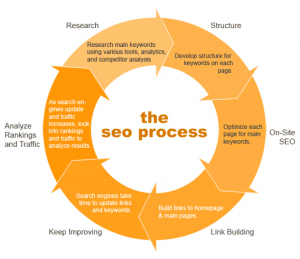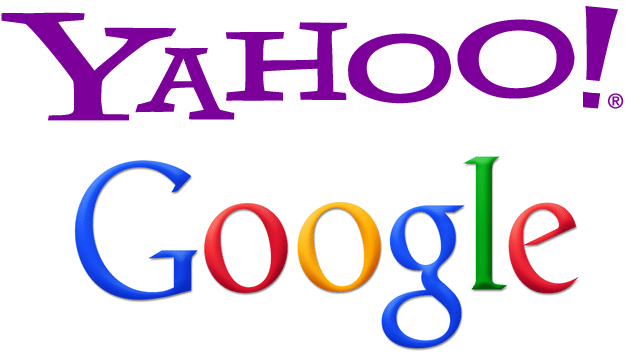 When building a website to rank in Google, it is important to understand some of the main ranking factors used to index your website. We’ve written several articles about Google ranking factors in the past and in this article, we’ll reference some of the main on-page and off-page ranking factors that will help improve your search rankings.
When building a website to rank in Google, it is important to understand some of the main ranking factors used to index your website. We’ve written several articles about Google ranking factors in the past and in this article, we’ll reference some of the main on-page and off-page ranking factors that will help improve your search rankings.
When creating your website, keep in mind a Google’s mobile-friendly algorithm boost has rolled out. Considering most searches are performed on mobile devices and tablets, it is imperative to have a website that is viewable on mobile devices. If you’re not sure whether your website is mobile responsive, you can use Google’s Free Mobile-Friendly Test.
Once your site is constructed and working properly, start by optimizing the content and meta-tags for your main keywords. Below is a reference to get you started.
Keywords – We suggest knowing your main keywords & keyword phrases. To properly optimize your website to rank in Google, we must first start by optimizing the home page content and meta-tags with these keywords in mind. Tools such as Google Adwords Keyword Planner is suggested.
The Title tag – The title tag appears at the top of your browser and the search engines view it as the title of your page. Therefore, make sure it contains your keyword or keyword phrase. Keep in mind Google typically only show the first 50 – 60 characters of the title, so try and keep it short and to the point.
The Meta-description – The meta description displays under the title in search results and is a more concise description of the web page content. Google will typically only display the first 150 – 160 characters of the description, so try and keep it descriptive and reference the main keyword or keyword phrase of your web page.
Alt-tags – Alt-tags are used to tag an image or video with a descriptive keyword of what the image or video is about. The alt-tag is one of the most overlooked meta-tags we notice when auditing client sites.
You’ll want to uniquely optimize every page you create for your website to avoid duplicate tag issues.
Next, we recommend creating your page content using your keyword and keyword phrase. Write the content to appeal to your users first. Like the Title tag, the H1 tag or Header tag is a very important html tag. Try using your keyword or keyword phrase instead of a generic tag such as “Welcome” or “Welcome to Our Site!”. Google reads this tag to determine what the page content is about. If you have more than 1 main topic, use sub-heading like H2 and H3 tags. Too many H1 tags can hurt your rankings, so we recommend using no more than 2 on a page, and if you need more, utilize the sub-heading tags such as h2,h3,h4…
AMP – Assuming your website is mobile friendly, you’ll want to optimize your site for AMP (Accelerated Mobile Pages) to provide mobile optimized content. For wordPress users, there are many plugins developed to make it easier to employ.
Schema Markup – is a set of unique html tags to help the search engines display more informative results for a user. This is important for local businesses. Yoast Local SEO plugin is recommended for WordPress users, however, it can be coded manually. Once your schema-markup is added, check it using Google’s Structured Data Testing Tool. You can Google this topic and find specific information regarding Schema Markup.
Google XML Sitemap – Adding a google xml sitemap is important to help Google index your pages properly. The yoast SEO plugin is recommended for WordPress users.
Once the site optimization is complete, perform a site audit to ensure it reads correctly and there are no html or coding issues. Next, we recommend you proceed setting up Google Console and Google Analytics. Google Console will give you insight to your sites indexing status and assist in optimizing the visibility of your website.
Site Speed – Site speed is important for good rankings and usability. It is also considered a ranking factor by Google. Ensure you are on a fast server and utilize caching plugins and CDN’s. Cloudflare or MAX CDN is recommended.
SSL – Sites that use SSL rank better in Google. It will help improve your overall quality score, and it is a Google Ranking Factor.
Blog – Including a blog on your website will help by enabling you to consistently add unique content to your website. The freshness of content accounts for nearly 24% of your overall rankings. We suggest writing a 1000 word article at least one a month with interesting content about your industry, products and services. Think of what your potential users might be searching in Google. Make sure to add a picture or video with each post and share the post on your social medial channels.
Off-Page Optimization – Once you completed your website, consider setting up your social media accounts such as FaceBook, Twitter, Google Plus etc… Then actively share your blog posts, images & videos across all channels.
Backlinks – Backlinks are still considered the corner stone for your rankings in Google. Links from websites with high domain authority (DA), and local business citations will help improve your overall SEO score. Backlinks account for 30% of how your site ranks, 24% comes from blogging, and 10 – 12 % from Social Media sites. Remember Not all backlinks are created equal, therefore it is recommended to contact a professional SEO Company.



